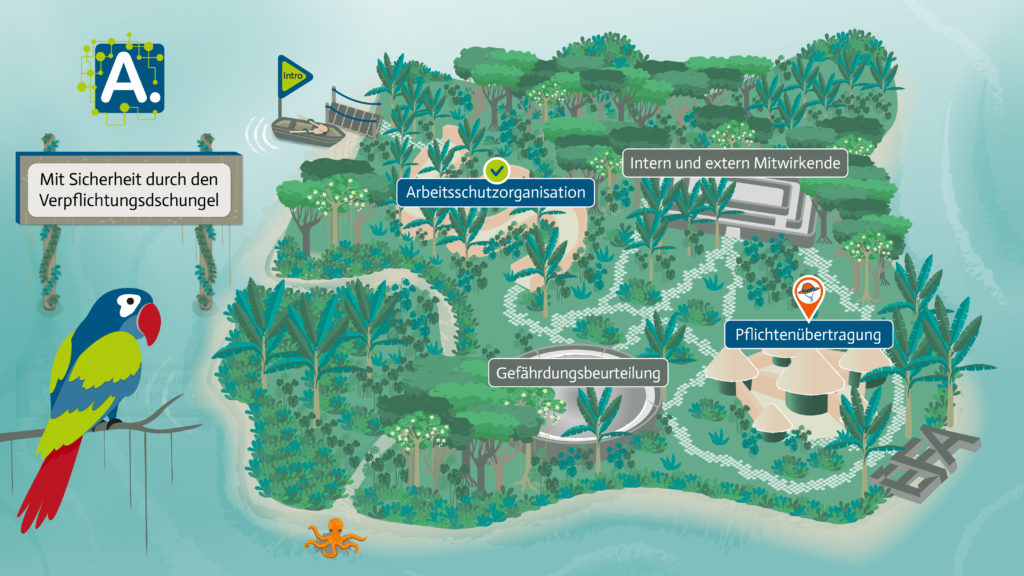How to Develop an Adaptive Learning Path for the Serious Game E.F.A.
by Cornelia Schade
One research question within E.F.A. is how GBL can be supported by adaptive learning paths and how these adaptive elements can be sufficiently developed in order to make learning more experiential and time-efficient.
The serious game E.F.A. addresses the need of learning more about occupational health and risk assessment among leaders in the social service sector. The topic of workplace safety is often perceived as a jungle of obligations. The browser-based game E.F.A. wants to untangle this jungle and provide assistance for companies conducting a risk assessment.
One overall aim of the project is to design the serious game as an adaptive learning environment. Compared with traditional learning environments, adaptive learning systems have the unique quality of adapting to the needs of the learner. Vocational biographies nowadays tend to be more diverse, learners are more heterogeneous, bring along different prior knowledge and teachers are increasingly challenged in meeting these various needs. To address this challenge, the project explores the key activities needed for developing an adaptive GBL environment.

Making E.F.A. an adaptive learning system has the potential to optimize learning in regard of the individual needs of the learners and moreover increase their flow experience and motivation. The adaptive serious game can be used for further education purposes, especially for training leaders in health-related topics.
During the project E.F.A., a prototype of an adaptive serious game for workplace safety was developed. One key aspect of the development process was to discover how the serious game can be created as an adaptive game which adjusts to the individual needs of the learner. To focus the conception and development on this specific goal, the project team identified three baseline components the adaptive learning system needs – a domain model, a learner model and a tutorial model[22].
In the domain model, all information on the knowledge addressed in the game and what relations exist among this knowledge (is specific knowledge a prerequisite for other knowledge?) was collected. Later, those knowledge objects were translated into specific learning tasks, like mini-games, puzzles, quizzes. In the learner model all the information on the learner, especially how they completed certain tasks (performance of the learner), were collected. In the tutorial model, the project team defined which different learning paths are offered and how certain instructions or contents adapt based on the learner model to provide individual assistance.
The attempt of creating an adaptive serious game leaves some questions open for further research. One question regarding the domain model is how to sufficiently validate that the prerequisite relationships between different knowledge objects found and defined by the team are actually prerequisite for the learner. The data collection on the learner’s behaviour leaves the challenge as to how a sufficient value reflecting the learner’s performance can be created and how this value can serve as a basis for choosing individual learning paths.
Based on your insights, GBL can…
be a field in which the use of adaptivity and AI has high potential as it offers the possibility to meet the needs of learners with different backgrounds and different prior knowledge.
Based on your insights, GBL cannot…
serve all learners’ needs. The general attitude towards games and learning in a playful way has a high impact on the success of a game-based learning system.

